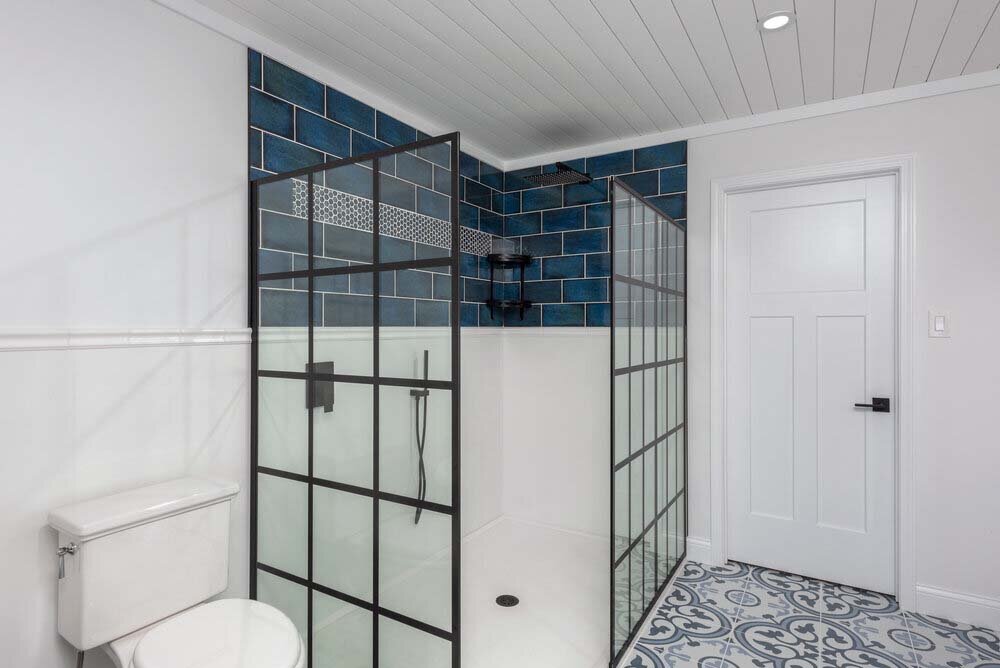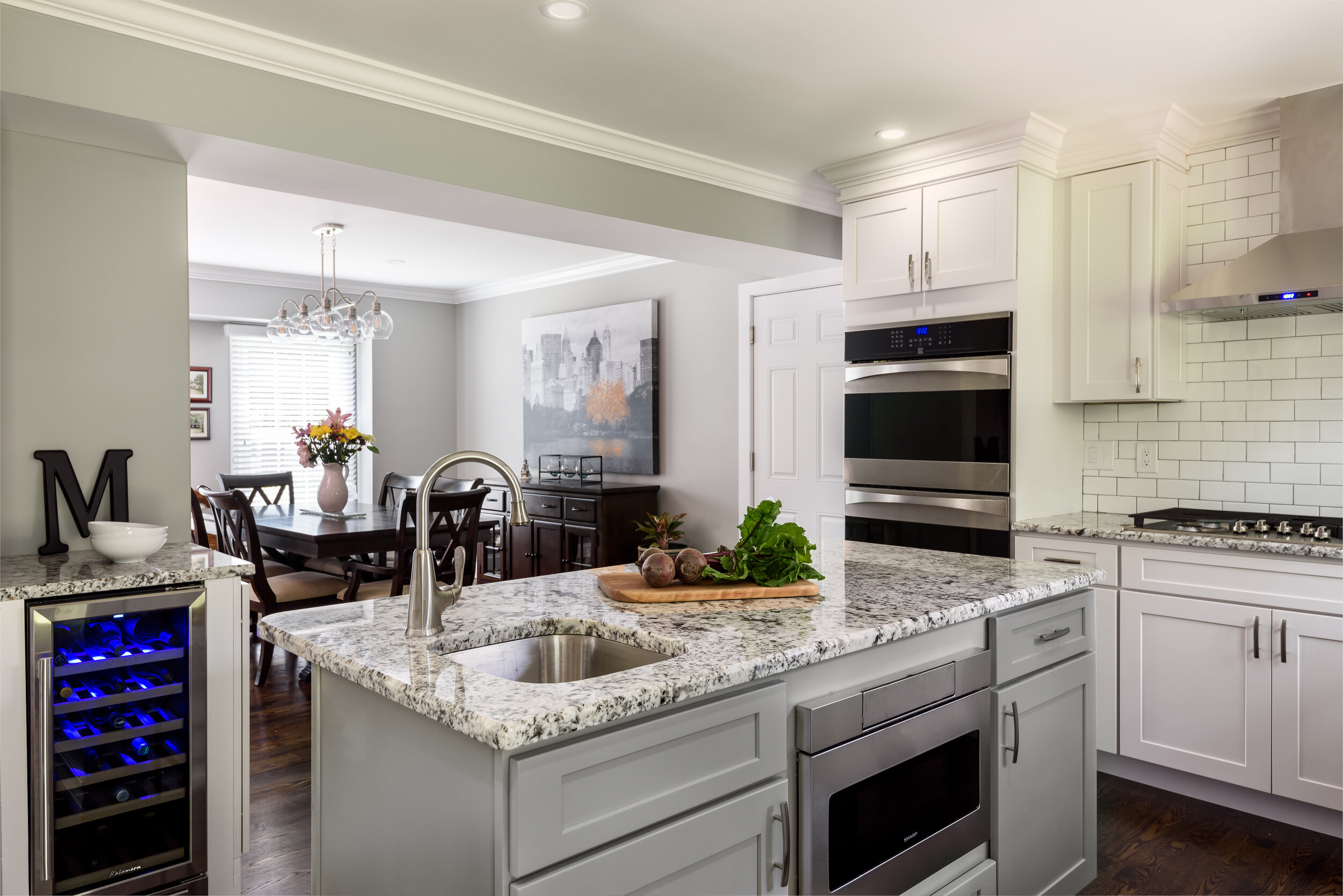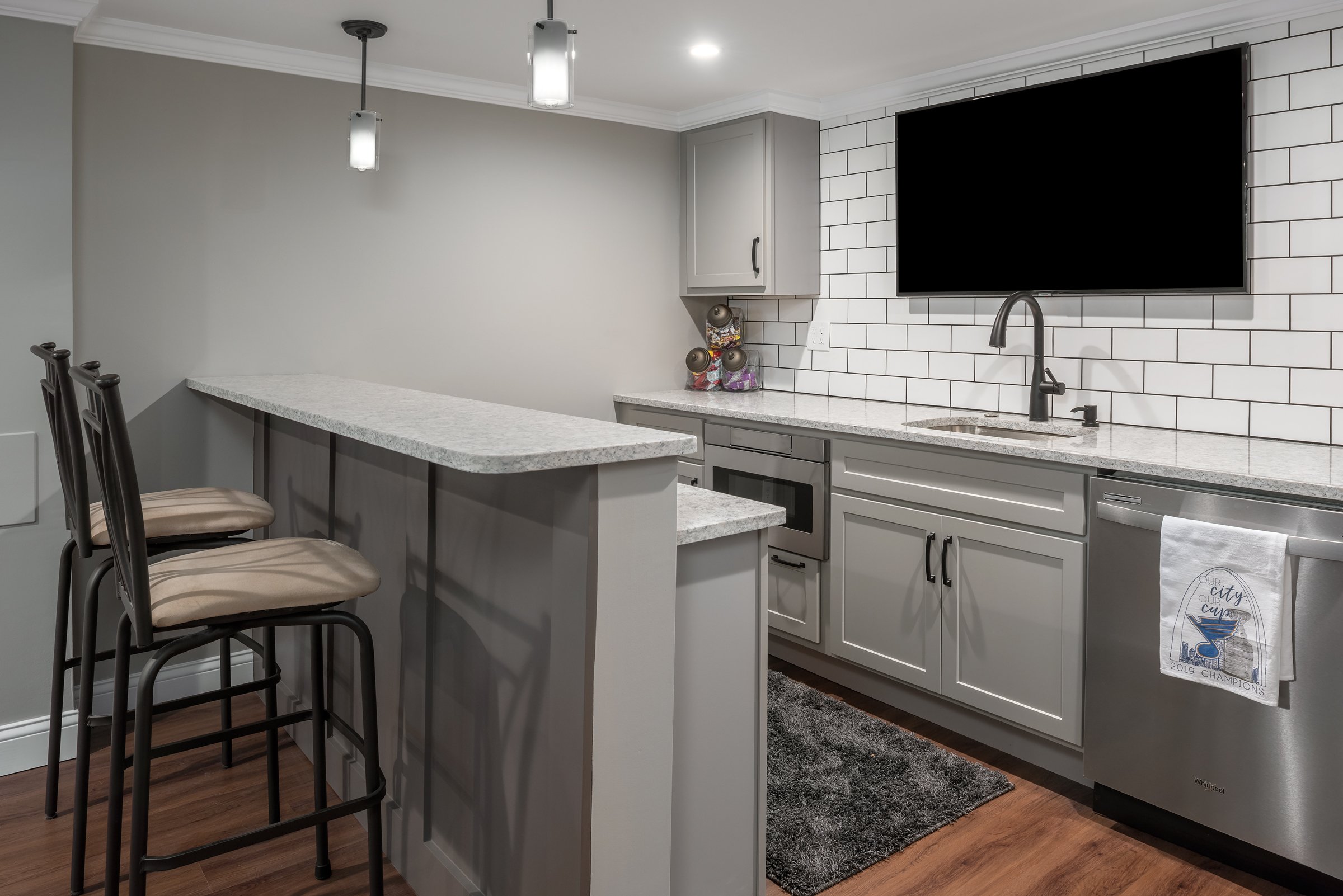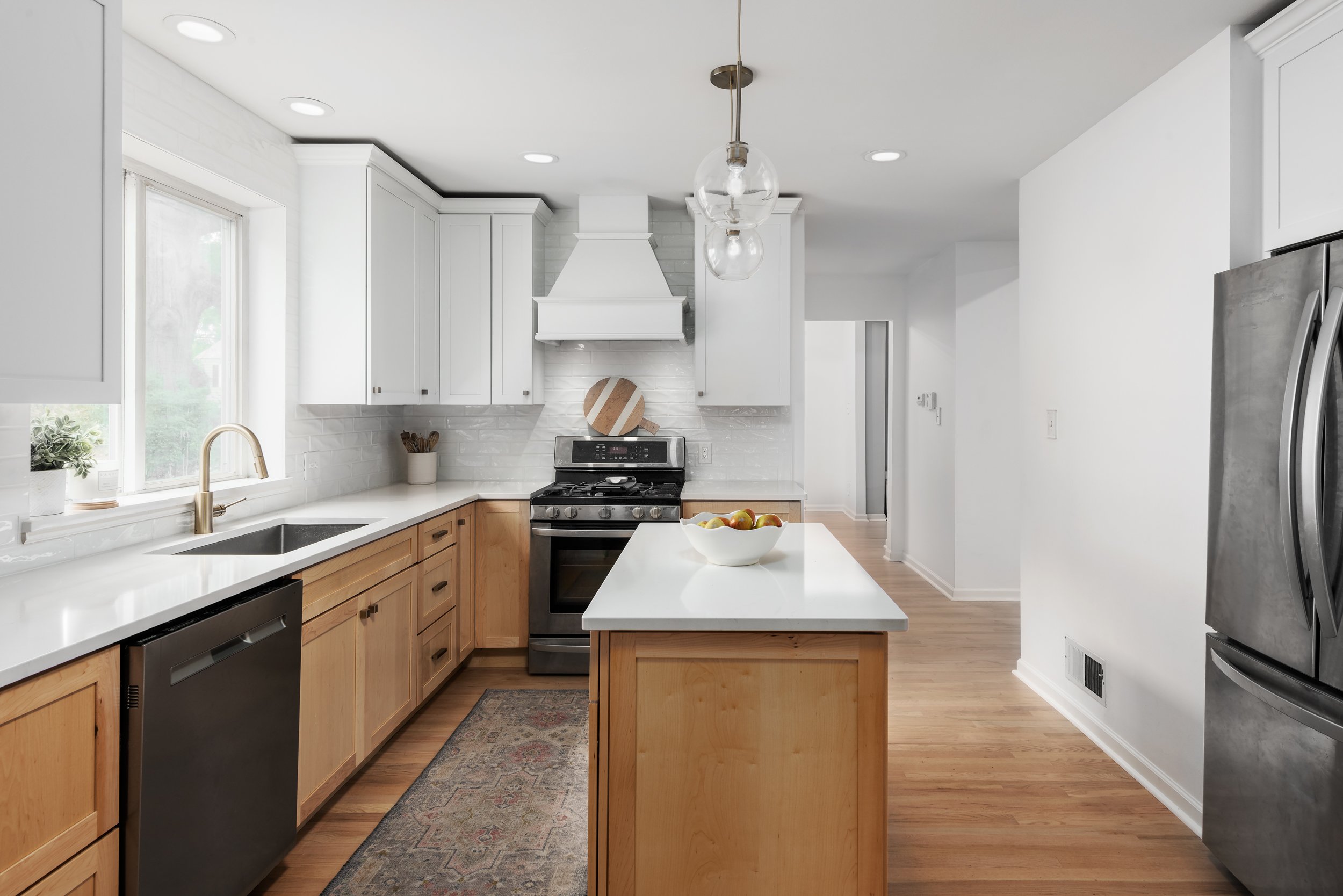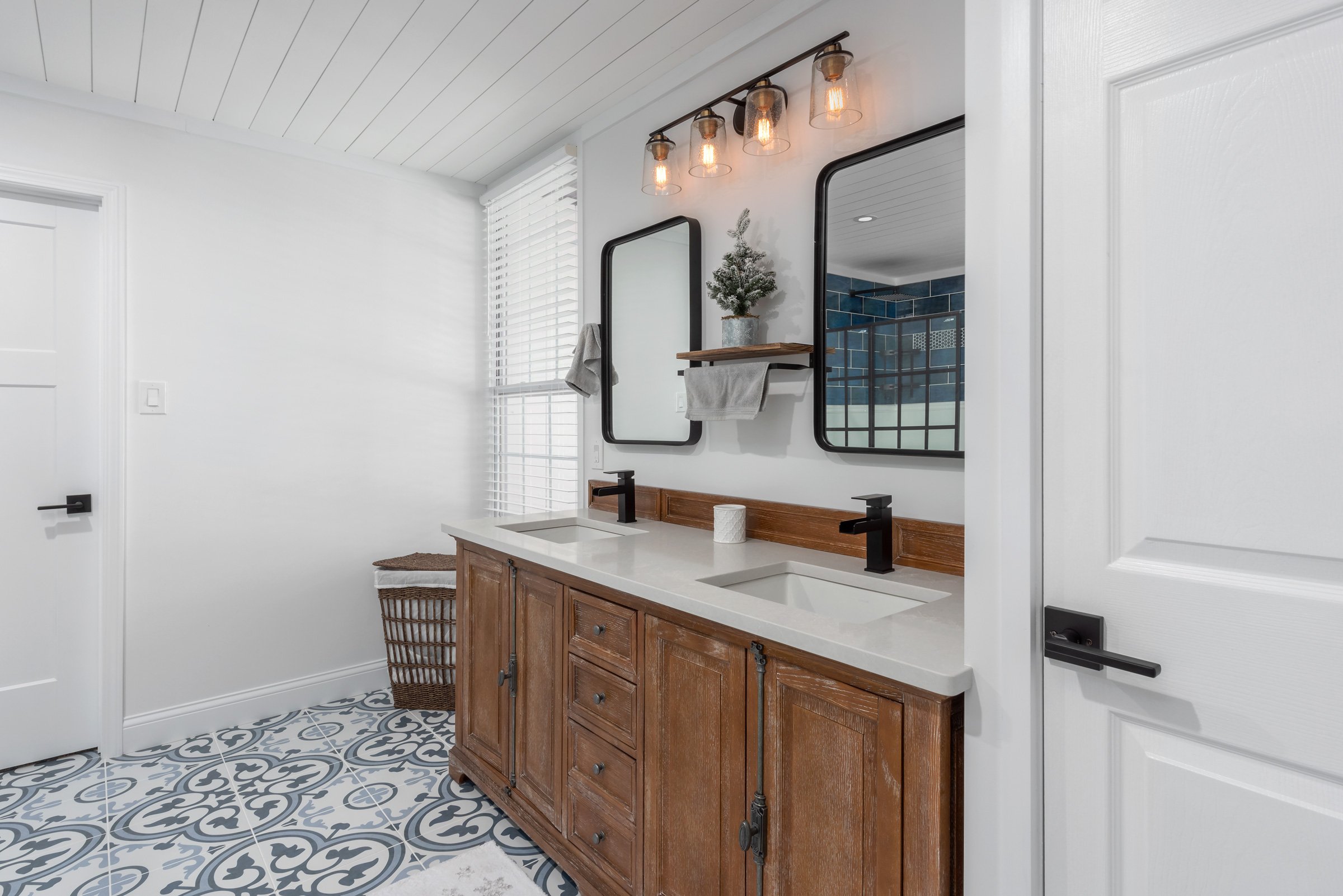A kitchen remodel is one of the most meaningful investments a homeowner can make. In St. Louis—where homes range from classic brick two-stories in Webster Groves to expansive modern builds in Chesterfield—the kitchen is more than a workspace. It’s the anchor of the home, the room that sets the tone for daily living and long-term value.
Naturally, homeowners want to know what a kitchen remodel actually costs here in Missouri. But the truth is that price is shaped by hundreds of small decisions—materials, craftsmanship, structural updates, and the level of detail your project demands. Every choice influences the final number, which is why remodeling costs can vary widely from one home to the next.
At Morganco Design Build, we approach every project with the same philosophy our family has carried for three generations: a kitchen should be built with care, engineered to last, and designed with intention. When homeowners understand the “why” behind pricing, they’re able to make confident, informed decisions that support both their budget and the integrity of their home.
This guide breaks down what you can expect to invest in a Missouri kitchen remodel, what drives the cost, and how thoughtful design and skilled workmanship elevate every dollar you put into your home.
READ: 5 Things to Consider Before Remodeling Your Kitchen
What Is the Average Cost of a Kitchen Remodel in Missouri?
Cost Ranges for St. Louis Kitchen Renovations
Kitchen remodels in Missouri typically fall into three broad categories. These ranges reflect data from recent Morganco Design Build projects across St. Louis County, St. Charles County, and surrounding communities.
Homeowners should expect the following starting points:
Cosmetic Refresh: $25,000 – $45,000
Typically applied to smaller kitchens or spaces where the layout remains intact and modifications focus on surfaces and fixtures.Mid-Range Remodel: $55,000 – $95,000
This is the most common level for St. Louis homeowners—new cabinetry, upgraded layout, improved lighting, quality countertops, and modern appliancesHigh-End or Fully Custom Remodel: $110,000 – $200,000+
This category involves structural reconfiguration, premium custom cabinetry, high-performance appliances, and finishes chosen for long-term durability and design cohesion.
Even within each range, the investment varies based on the home’s age, existing mechanical systems, and whether the kitchen requires reconfiguration. Older homes in St. Louis—especially in areas like University City, Brentwood, and Glendale—often include electrical, plumbing, or load-bearing considerations that newer suburban homes may not.
Why Costs Vary Dramatically From Home to Home
Kitchen remodeling in Missouri—especially around St. Louis—varies more than many homeowners expect. It is rarely about one big expense. Instead, it is the sum of dozens of decisions layered over your home’s existing conditions.
In areas like Glendale, Webster Groves, and University City, older homes may surprise even longtime owners with electrical issues inside plaster walls, non-standard framing, or plumbing systems dating back several decades. Bringing these up to code isn’t just necessary; it ensures the kitchen functions safely for generations.
Newer suburban homes in Chesterfield or Wildwood, on the other hand, may not require extensive mechanical updates, but they often benefit from layout improvements—larger islands, expanded storage, and upgraded ventilation to support high-performance appliances. In these cases, the craft lies in reconfiguring the space cleanly while respecting the home’s structure and scale.
Key Factors That Influence Your Kitchen Remodeling Cost
Kitchen Size and Layout
Square footage plays a role, but layout plays a bigger one. A compact kitchen with a full reconfiguration can cost more than a larger kitchen with a simple facelift. Many St. Louis kitchens built before the 1990s still rely on isolated, boxed-in layouts. Opening these spaces often requires:
Load-bearing wall removal
Structural beam installation
Rerouting ductwork or plumbing
Rewiring circuits to meet modern electrical needs
When done properly, these changes completely transform how a kitchen feels and functions—but they must be executed with precision. A poorly installed beam or misaligned cabinet run creates problems the homeowner will notice for years.
Structural Changes and Mechanical Updates
Structural modifications are among the most influential cost factors in a St. Louis kitchen remodel, especially in older neighborhoods where homes were built long before open-concept living became standard. When a homeowner asks to remove a wall between the kitchen and dining room—or to enlarge the footprint of the space—we must determine whether that wall is load-bearing, what it supports, and how altering it will affect the home’s entire structure.
In homes built before the 1960s, particularly in Brentwood, Webster Groves, and Richmond Heights, joist spacing and beam placement often differ from today’s standards. A structural change may involve:
Engineering calculations
LVL or steel beam fabrication
Temporary shoring
Reconstruction of adjacent walls and ceilings
Rerouting electrical and HVAC lines
These steps aren’t just procedural; they’re foundational to ensuring long-term performance. When our team installs a structural beam, we treat it with the same attention we would in our own homes—because the integrity of your kitchen depends on it.
Mechanical updates—electrical, plumbing, and HVAC—also play a pivotal role. Bringing a kitchen up to modern code often demands additional circuits for appliances, dedicated GFCI protection, improved ventilation, and sometimes a complete rework of old copper or galvanized plumbing. These upgrades are invisible when the project is complete, but they are essential to a safe, dependable kitchen built for the next generation.
READ: How to Pick Materials for Your Kitchen Remodel
Cabinetry Options (Custom, Semi-Custom, Stock)
Cabinetry is not only the largest aesthetic component of a kitchen—it is typically the single most significant line item in the budget. The difference between stock, semi-custom, and fully custom cabinets is far more than color or door style; it is the difference between building a kitchen around prefabricated limitations vs. designing one that fits the home with precision.
Stock Cabinets
Stock options offer quick turnaround and budget-friendly pricing. However, sizes come in fixed increments, creating gaps or filler strips that can limit design efficiency. They perform well in simple remodels but fall short in kitchens requiring tailored storage or exact fitment.
Semi-Custom Cabinets
Semi-custom provides better sizing options, higher-quality finishes, and the ability to adapt to most layouts. Many St. Louis mid-range remodels use semi-custom cabinetry because it strikes a healthy balance between personalization and cost.
Fully Custom Cabinets
This is where craftsmanship truly enters the conversation.
In high-end renovations, we design cabinets down to the quarter inch. We match grain patterns, inset doors with frictionless precision, and build storage tailored to the homeowner’s daily life—pull-out spice racks, appliance garages, deep pot drawers, and seamless panel-ready appliances.
A custom-built kitchen in a historic Clayton or Ladue home may include:
Furniture-grade finishes
Custom crown and base profiles
Specialty storage
Integrated lighting
Made-to-measure island designs
When cabinetry is fully custom, every reveal line, hinge motion, and paint finish is deliberate. This is the heart of a true design-build kitchen.
Countertop Materials and Pricing
Countertops significantly influence both the aesthetic and functional quality of a kitchen. St. Louis homeowners are moving away from laminate and toward durable, high-performance materials such as quartz, quartzite, and porcelain.
Each option has its benefits:
Quartz
Consistent, durable, and low-maintenance. Ideal for busy families who want beauty without the upkeep. The majority of our mid-range remodels incorporate quartz.
Granite
Natural beauty with distinctive patterns. A strong choice for homeowners who appreciate variations and want a slightly more organic look.
Quartzite
Premium, heat-resistant, and visually striking. Popular in upscale remodels in Kirkwood and Town & Country homes where a dramatic island slab is desired.
Porcelain Slabs
Gaining popularity for their durability, stain resistance, and ability to mimic marble with greater reliability.
Countertop selection impacts not just cost, but installation complexity. Large islands—especially those designed for seating—require engineered support and precise fabrication. Invested correctly, countertops elevate the kitchen’s day-to-day performance and long-term value.
Appliance Packages and Electrical Requirements
Appliances shape how a kitchen functions. Homeowners often underestimate the electrical, ventilation, and installation requirements needed to support professional-grade units.
A few common examples in Missouri remodels include:
Gas range upgrades requiring new venting
Panel-ready refrigerators fitting flush within custom cabinetry
Double-wall ovens needing dedicated circuits
Beverage centers or under-counter fridges incorporated into islands
In high-end kitchens, appliance packages alone may cost more than entire budget remodels. But when the cooking experience matters—when the chef of the family loves weekend entertaining—these investments transform the functionality of the space.
Flooring, Lighting, and Ventilation
Flooring
Wood flooring remains the most common choice in St. Louis due to its warmth and continuity with surrounding living spaces. Tile is preferred in homes where durability and water resistance are crucial. In older homes, refinishing existing hardwoods involves leveling uneven subfloors or replacing damaged sections before staining.
Lighting
Lighting is where a kitchen’s personality emerges. A well-designed plan includes:
Recessed cans for general illumination
Pendant lighting over islands
Under-cabinet LEDs for task lighting
Interior cabinet lighting in glass-front or display units
Lighting is often underestimated, but it determines how your kitchen feels 24 hours a day.
Ventilation
Proper ventilation is essential—especially with high-BTU gas ranges. A quality hood removes heat, odor, moisture, and grease before they impact cabinetry and indoor air quality. In tightly built homes, this may require makeup air systems to maintain balance.
Finish Level: Good, Better, Best
Every remodel fits into a finish category that influences pricing:
Good: Solid, dependable materials with minimal customization.
Better: Superior durability, semi-custom cabinetry, elevated lighting, and refined surfaces.
Best: Fully custom, structurally reconfigured, premium materials, chef-level appliances, and one-of-a-kind design elements.
Finish level is where the artistry of the remodel truly shows. At Morganco, we guide homeowners toward finishes that fit both their lifestyle and their home’s long-term integrity.
How Long Does a Kitchen Remodel Take in Missouri?
A well-executed kitchen remodel in Missouri follows a structured timeline. While every home and scope of work is unique, a properly planned project moves through predictable phases. At Morganco Design Build, we emphasize thorough preparation because it shortens construction time and eliminates costly surprises.
Typical Project Duration by Remodel Type
Cosmetic Refresh: 4–6 weeks
Ideal when keeping the existing layout and focusing on surface upgrades.Mid-Range Remodel: 8–12 weeks
The most common timeline for St. Louis homeowners—new cabinetry, counters, lighting, and partial layout changes.High-End or Structural Remodel: 12–20+ weeks
Structural reconfiguration, custom cabinetry, engineered beams, extensive electrical and plumbing upgrades, and high-end finishes require a longer schedule.
What Can Extend or Shorten Your Timeline
Several St. Louis-specific considerations influence project length:
Age of the home: Older homes may require unexpected updates behind walls.
Structural modifications: Removing load-bearing walls requires engineering and inspections.
Custom cabinetry lead times: Fully custom products take longer to fabricate but provide unmatched fit and finish.
Appliance availability: High-end appliances often require pre-ordering to avoid delays.
Our philosophy is simple: time spent planning is never wasted. The more precise the design phase, the smoother and faster the build becomes. In three generations of work, this has proven true in every kitchen.
How to Budget for a Kitchen Remodel in Missouri
Budgeting for a remodel is not about finding the lowest cost; it is about understanding value. A kitchen built with thoughtful design, durable materials, and skilled craftsmanship performs well for decades. One built with shortcuts becomes costly over time.
Establishing Your Investment Level
We guide homeowners through three core considerations:
How long you plan to stay in the home
Long-term plans justify higher-quality materials and custom work.How the kitchen currently functions
Poor layouts or outdated mechanical systems may require structural changes.The home’s value and neighborhood standards
A kitchen in Kirkwood or Ladue carries different expectations than one in a starter home.
Understanding Contingencies
Even with precise planning, older Missouri homes can reveal hidden issues—settling floors, outdated wiring, unvented plumbing, or deteriorated framing. A smart budget sets aside 10–20% for contingencies, depending on the home’s age.
Avoiding Common Budget Mistakes
We routinely advise homeowners to avoid:
Underestimating cabinetry costs
Choosing appliances before planning power and ventilation needs
Skipping the design phase (this leads to change orders)
Overspending on isolated elements without balancing the whole space
A budget is strongest when it reflects real conditions, real craftsmanship, and a realistic vision for the home.
A kitchen remodel in Missouri is an investment not only in your home, but in the way your family lives each day. Costs vary, but the value of a well-designed, expertly crafted kitchen lasts for decades. Whether you’re opening up a historic home in Webster Groves or upgrading a contemporary space in Chesterfield, the key to success is combining thoughtful design, durable materials, and skilled workmanship.
At Morganco Design Build, we believe a kitchen should feel intentional—every line aligned, every surface solid, every detail considered. That level of precision doesn’t happen by accident. It comes from respecting the craft, honoring the home’s structure, and guiding homeowners with clarity and care. Contact us today for a free consultation!



